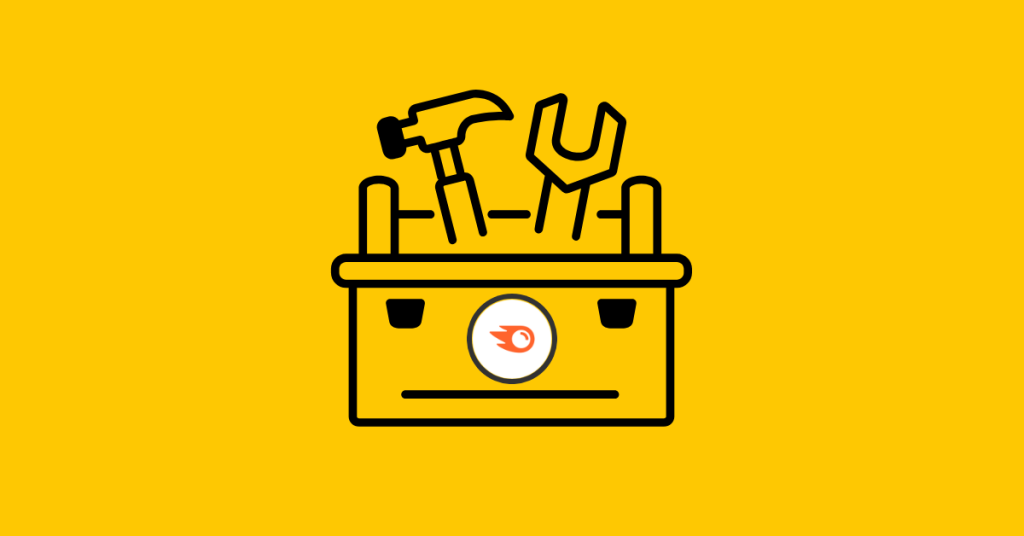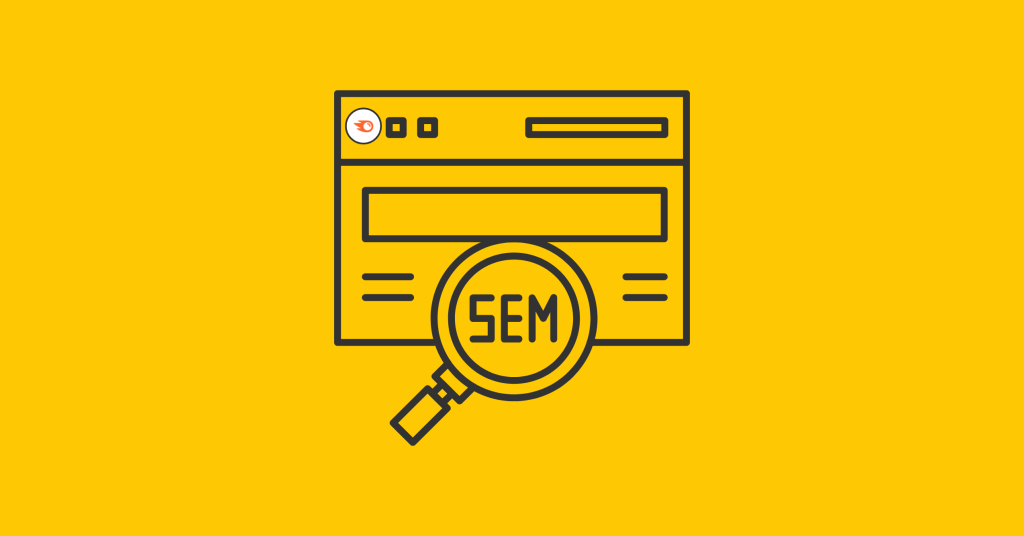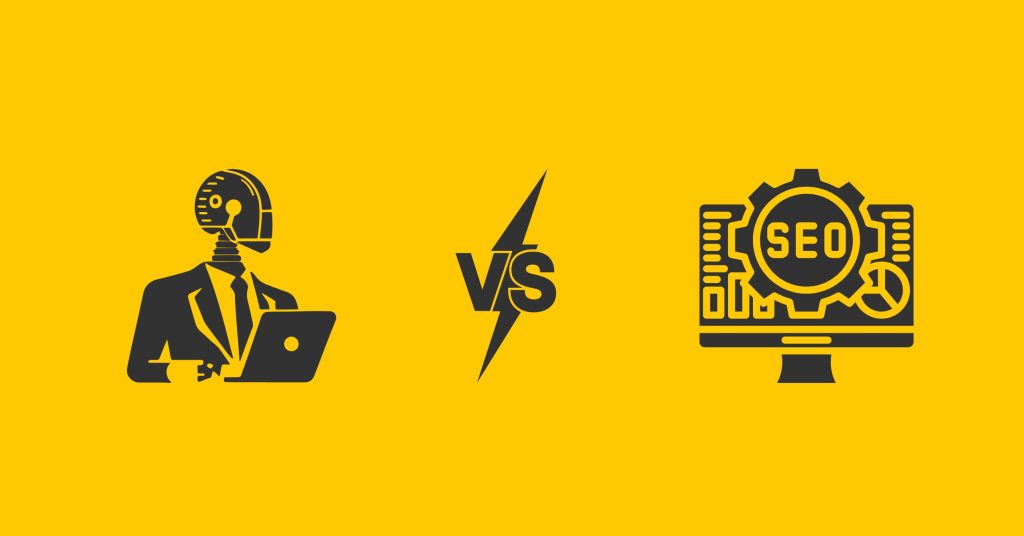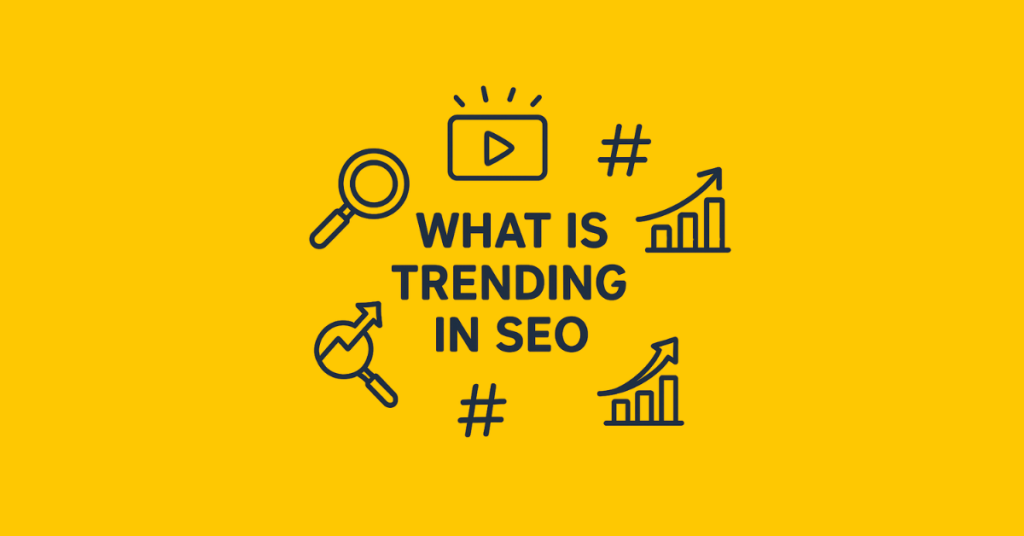In 2025’s evolving SEM landscape, stagnation equals obsolescence. With Google processing 2.5 trillion+ annual searches and AI revolutionizing user intent, outdated tactics bleed ROI.
The most successful marketers aren’t just keeping up, they’re pulling ahead by harnessing generative AI for ads that feel tailor-made, tapping into zero-party data for laser-focused targeting, and unleashing Performance Max campaigns to own every corner of the digital landscape.
To thrive, future-proof keyword strategies for voice/visual search surges, harness predictive audiences ethically, and weaponize Google’s evolving algorithms. In 2025, SEM isn’t adaptive; it’s anticipatory.
Learn about the basic SEM practices and how they are subject to change with changing times and user search patterns.
Top 10 Best SEM Practices
Here’s a summary of the best SEM practices that you can implement to help maximize your campaign performance and ROI.
| Best Practice | Key Parameters |
|---|---|
| Keyword Research | Search intent, volume, competition, and long-tail keywords |
| User Intent Targeting | Transactional, informational, and navigational intent matching |
| CPC Optimization | Bid strategy, quality score, ad relevance, budget allocation |
| Compelling Ad Content | Unique value proposition, clear CTAs, A/B testing |
| Mobile Optimization | Organized ad groups, targeting segmentation, and account structure |
| Result Tracking | Conversion rate, CTR, ROI, customer journey analysis |
| Ad Campaign Structure | Message matching, conversion-centered design, and load time |
| Landing Page Optimization | Relevant keywords, ad relevance, and landing page experience |
| Quality Score Enhancement | Relevant keywords, ad relevance, landing page experience |
| Competitor Analysis | Market position, keyword gaps, bid strategies |
Best Practices To Follow in SEM In 2025
As paid search continues to evolve, these refined practices will help you maximize campaign effectiveness while maintaining cost efficiency in the current competitive landscape.
1. Keyword Research
The foundation of any successful SEM strategy begins with comprehensive keyword research. Identifying high-intent keywords ensures your ads appear to users who are ready to engage or make a purchase.
Keyword research has shifted toward understanding conversational patterns as voice search continues to grow.

Utilizing tools like Google Keyword Planner, Semrush, and Ahrefs allows you to discover relevant keywords with substantial search volumes and manageable competition.
The focus has shifted from simply targeting high-volume keywords to finding the perfect balance between search volume, user intent, and competition level.
Long-tail keywords remain particularly valuable for their specificity and higher conversion potential, especially for businesses with limited budgets.
2. User Intent
Matching keywords to user search intent has become essential for successful SEM strategies. Search intent typically falls into three categories:
- Informational
- Transactional
- Navigational
Google’s algorithms have become increasingly sophisticated at determining user intent, making it critical to align your keywords accordingly.
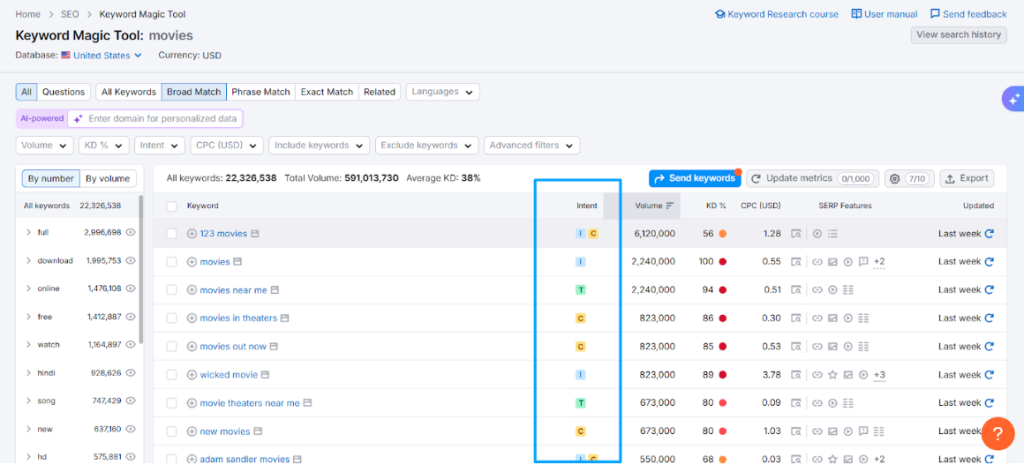
For example, transactional keywords like “buy now” work best for users ready to purchase. In 2025, Google has further refined its understanding of contextual intent, requiring marketers to create more nuanced targeting strategies.
This means developing different ad campaigns for various stages of the buyer’s journey, with distinct messaging for awareness, consideration, and decision phases.
This intent-based approach improves click-through and conversion rates, making campaigns more efficient.
To learn more about how user intentions can be identified better, you can learn with the Semrush Academy, especially if you’re using Semrush.
3. CPC Consideration
Cost-per-click management has evolved from simply bidding on keywords to a sophisticated balancing act of quality score optimization and strategic bidding.
In 2025, high competition for specific keywords continues to drive up costs, making it increasingly difficult for small businesses to compete with larger brands.
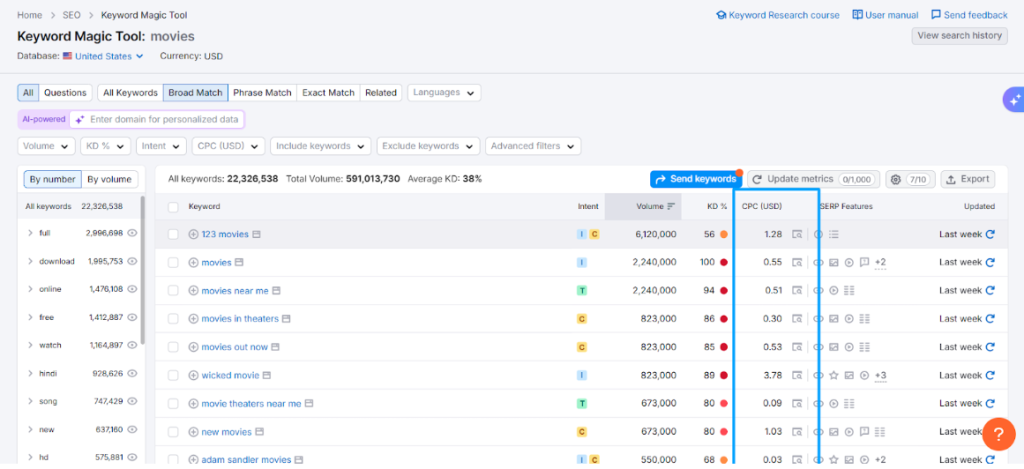
Innovative bidding strategies leveraging Google’s AI have become more reliable, allowing for real-time adjustments based on conversion likelihood. When developing your SEM strategy, focusing on keywords with a reasonable cost-per-click relative to your budget is crucial.
Tools like Google Ads Keyword Planner provide valuable insights into expected costs. In contrast, competitor analysis tools help identify gaps in the market where you can achieve better ROI without competing directly with industry giants.
4. Interesting and Unique Content
Creating compelling, engaging ad content has become more critical than ever. To attract potential customers and stand out from the competition, your ads must have content that resonates with your audience.
Google’s responsive search ads have become more sophisticated, automatically testing different combinations of headlines and descriptions to determine which perform best.
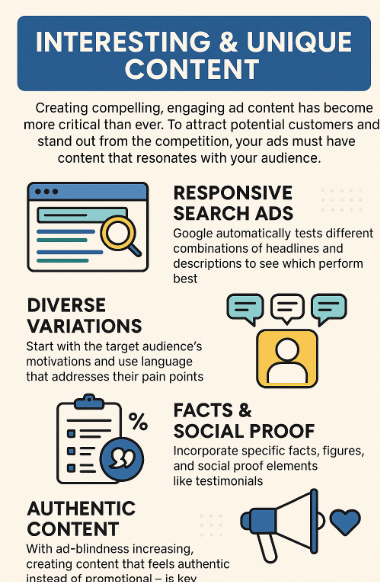
This places greater emphasis on creating diverse, high-quality content variations that can be effectively mixed and matched. The most successful ads start by understanding the target audience’s motivations and using language that addresses their pain points.
Incorporating specific facts, figures, and social proof elements like testimonials significantly boosts credibility. With users becoming increasingly ad-blind, creating content that feels authentic rather than promotional has become essential for capturing attention.
5. Mobile and Visual Search Optimization
Mobile optimization is now a non-negotiable aspect of SEM. With mobile searches surpassing desktop queries, ensuring your ads and landing pages perform flawlessly on smaller screens directly impacts campaign performance.
Visual search has jumped up by 65%, with platforms like Google Lens allowing users to search using images rather than text.
This requires optimizing not just for keywords but also for visual elements in your ads and landing pages. Mobile optimization ensures responsive design, fast loading times, and intuitive smartphone navigation.
Additionally, location-based targeting has become more precise, allowing businesses to target users within specific radii of their physical locations.
This combination of mobile optimization and local targeting creates powerful opportunities for brick-and-mortar businesses to drive foot traffic.
All of this paves the way for a different way to search for users, where VR search will be eminent in the future too!
6. Tracking Results
One of the most important metrics to track is keyword performance. By monitoring how your target keywords perform, you gain insights into their effectiveness and can adjust your strategy accordingly. Additionally, monitoring cost-per-click helps manage your budget effectively.
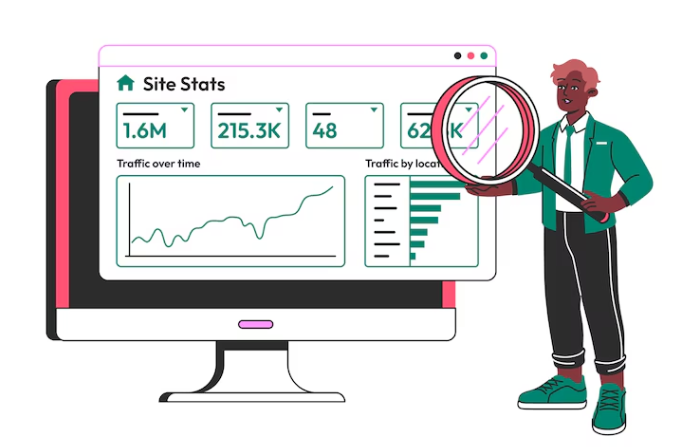
Analytics have become more sophisticated, with GA4’s event-based tracking providing deeper insights into user behavior. Conversion tracking has evolved beyond simple clicks to include micro-conversions and customer journey analysis.
This allows marketers to identify which touchpoints contribute most to conversions and allocate budget accordingly.
The most successful SEM practitioners now leverage predictive analytics to anticipate campaign performance and make proactive adjustments rather than reactive ones.
This data-driven approach ensures continuous improvement and maximizes ROI by eliminating ineffective tactics before they waste significant budget.
7. Ad Optimization
Once your campaign is launched, your work is not finished! Ensuring your campaign remains successful over time requires closely monitoring its performance and your account health.
This has become more sophisticated, with successful marketers analyzing performance across multiple variables simultaneously.
It includes raising or lowering bids to stay competitive, pausing underperforming variants, analyzing keyword performance, and setting bid adjustments for specific audience segments or times of day.

Google’s AI-powered insights now provide actionable recommendations based on historical performance data.
Additionally, ad extensions have become more diverse, offering opportunities to showcase additional business information, promotions, and structured snippets.
Testing different extension combinations has become an essential part of optimization, as they significantly impact ad visibility and performance.
SEO vs. SEM – Which is Better?
There’s no one-size-fits-all answer as both strategies serve different purposes in your digital marketing mix.
The ideal approach combines both: Use SEM for immediate visibility and specific campaigns while building long-term SEO foundations for sustainable organic growth.
| Aspect | SEO | SEM |
|---|---|---|
| Timeline | Long-term results (months to years) | Immediate visibility |
| Cost Structure | Ongoing content and technical investment | Direct pay-per-click costs |
| Control | Limited control over ranking factors | High control over ad placement |
| Credibility | Higher perceived credibility | Sometimes viewed as promotional |
| Targeting Precision | Content-based targeting | Highly specific audience targeting |
| Visibility | Organic listings only | Premium positioning above organic results |
Timeline Differences:
SEO requires patience as results typically take 4-6 months to materialize, but benefits compound over time, creating lasting value. SEM delivers immediate visibility as soon as campaigns launch, making it ideal for time-sensitive promotions or new product launches that need instant exposure.
Cost Structure Differences:
SEO involves upfront investment in content creation and technical optimization, but doesn’t incur per-click costs. SEM provides precise budget control with direct costs for each click received, allowing for more precise ROI tracking but requiring continuous investment to maintain visibility.
Credibility Perception:
Organic rankings often carry higher perceived authority as users know they’re earned rather than purchased. However, well-crafted SEM campaigns can establish credibility through targeted messaging that precisely addresses user needs at the moment of search.
Best Tools For SEM in 2025
These powerful platforms provide the data intelligence and campaign management capabilities needed to execute sophisticated SEM strategies.
Each tool offers unique strengths that can be leveraged based on your specific business goals, target audience, and competitive landscape.
1. Semrush:
It offers comprehensive SEM capabilities with AI-powered predictive analytics and integration with Performance Max campaigns.
The competitive intelligence reveals competitor keywords and strategies while providing insights into ad copy effectiveness and landing page optimization opportunities.
Using Semrush has been game-changing for me, and this 8-year journey with Semrush has been fruitful for me.
2. Google Ads Keyword Planner:
Features enhanced machine learning that delivers precise search volume forecasting and keyword recommendations. The platform’s new intent analysis helps marketers understand user motivation, creating more relevant campaigns with better budget allocation based on suggested bid estimates.
3. Microsoft Advertising:
Leverages the Microsoft ecosystem and unique LinkedIn integration for superior B2B targeting. Offers competitive CPCs and innovative Audience Intelligence that segments users by professional attributes, ideal for reaching decision-makers efficiently.
Looking Ahead: Future Trends in SEM
The SEM landscape continues to evolve rapidly, with emerging technologies reshaping how marketers connect with audiences.
Staying ahead of these trends will be crucial for maintaining a competitive advantage as consumer behaviors and platform capabilities continue to transform.
The Continued Rise of AI and Machine Learning
Automation will continue evolving beyond current smart bidding strategies to incorporate predictive analytics that anticipate market changes before they happen.
AI will increasingly handle routine optimizations while providing marketers with strategic insights rather than just tactical recommendations.
Privacy-First Advertising
As cookie deprecation continues and privacy regulations expand, SEM will increasingly rely on contextual targeting and first-party data.
The ability to deliver relevant ads without invasive tracking will become a competitive advantage rather than a limitation.
First-Party Data
Collecting and leveraging your own customer data will become the cornerstone of effective SEM campaigns. Businesses with robust first-party data strategies will achieve better targeting precision and lower acquisition costs than those relying solely on third-party audience data.
Google’s 2025 I/O conference introduced significant algorithm updates that prioritize sustainable marketing practices and user privacy. The new Generative Search Experience provides more direct answers within search results, making position zero optimization essential for both paid and organic visibility.
Google’s AI-powered bidding now incorporates performance predictions based on real-time market conditions, allowing for more dynamic budget allocation across campaigns.
Boost Your SEM IQ:
Conclusion: SEM Best Practices are Evolving in 2025
Successful SEM in 2025 requires a strategic mix of technical expertise, creative messaging, and data-driven optimization.
By implementing the best practices outlined in this guide, from comprehensive keyword research and intent-based targeting to mobile optimization and robust analytics, you’ll position your business for paid search success.
Remember that SEM is not a set-it-and-forget-it tactic; it will require continuous monitoring and adjustment to maintain performance as competition, costs, and algorithms evolve.
Start by implementing one or two of these practices, measure the results, and gradually incorporate more as you refine your approach.
The digital landscape will continue to change, but businesses that remain agile and committed to SEM excellence will consistently outperform their less adaptable competitors.
FAQs
Start with 5-10% of your gross revenue, focusing on high-intent keywords with lower competition that directly relate to your offerings.
You’ll typically see initial traffic immediately after launching campaigns, but optimizing for conversions usually takes 2-4 weeks of data collection and refinement.
This depends on your team’s expertise and available time; agencies bring specialized knowledge but at a higher cost, while in-house management offers greater control.
Voice searches typically use more conversational, question-based phrases, requiring you to incorporate natural language patterns into your keyword strategy.
Review performance weekly, make minor adjustments as needed, and conduct more comprehensive optimizations monthly based on accumulated data.
While possible, dedicated SEM landing pages typically perform better as they can be specifically optimized for conversion without worrying about SEO requirements.


